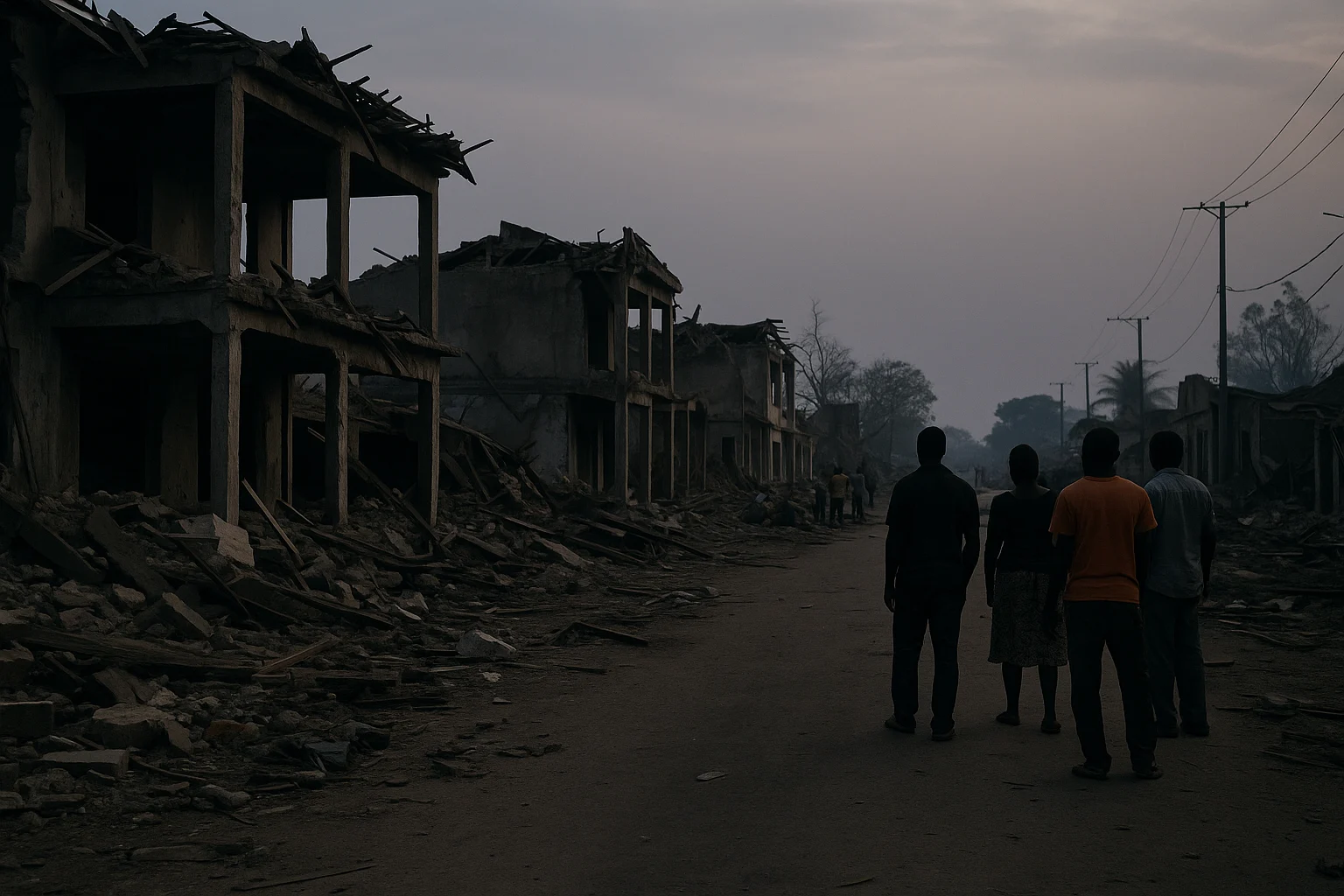
Brazzaville Arms Dump Blasts
by: The Calamity Calendar Team
March 4, 2012
A Day That Shook Brazzaville
In the early hours of March 4, 2012, Brazzaville, the bustling capital of the Republic of the Congo, woke to an eerie and fateful rumble. What began as subtle tremors in the atmosphere quickly escalated into an unfolding nightmare. The epicenter of this catastrophe was the Mpila military barracks, an unassuming section of the city that housed an arsenal far greater than its infrastructure—or its neighbors—could safely support.
Foundations Set for Disaster
The Mpila district was no stranger to the rumbles of military activity. Yet despite the quiet understanding that massive caches of munitions resided there, flickers of concern were mostly ignored by those in power. The barracks, established years prior and integrated almost seamlessly into the urban landscape, became a routine element of Brazzaville's backdrop.
The alarm was evident for those who wished to see it: inadequacies in infrastructure, whispers of an overloaded arsenal, and the perennial oversight that comes with bureaucratic complacency. Concerns over lax safety regulations were often met with the same rusting apathy as the fences surrounding the depot. Meanwhile, residential areas continued to encroach—an ever-tightening loop around the depot, setting the stage for disaster.
March 4, 2012: From Sparks to Inferno
As the city stirred to life that Sunday morning, unaware of the storm that lay ahead, a fire broke out within the military's ammunition depot. What ignited the initial blaze has since been a subject of inquiry, with speculations pointing towards an electrical short circuit. The fire hungrily spread through stacked munitions, each feeding the inferno with a destructive appetite.
The first explosion shattered through the morning calm—an abrupt rupture that echoed ominously across Brazzaville. Successive blasts followed, each more violent than the last, hurling debris and spreading chaos through the city streets. As panic took hold of its residents, the ground itself vibrated with the intensity of the explosions, reducing the skyline to a haze of smoke and echoing dread.
The Grip of Chaos
In the aftermath of the initial blasts, the city staggered like a boxer off-balance. Emergency services, including firefighters and medical teams, were soon overwhelmed by the sheer scale of destruction. Yet, driven by duty and the urgency of saving their community, they maneuvered through the chaos, dodging falling structures and rising flames—a testament to courage amidst crisis.
Thanks for subscribing!
Throughout the day, the soundtrack of desperation ruled—with cries for help underscored by more distant explosions. Every movement could trigger yet another blast, thwarting rescue efforts and spreading fear like a contagion. Evening brought a lull, yet the night was haunted by sporadic minor eruptions—a macabre reminder that the ordeal was far from over.
Picking Up the Pieces
When the echoes finally subsided, Brazzaville was left scarred from the assault. More than 280 lives were taken—their stories forever lost to the cacophony—and at least 2,300 others bore injuries as visible reminders of that morning. Homes were reduced to rubble; places of work, education, and healing were left hollowed and incapacitated. Over 2,000 buildings now lay in ruins, marking ground zero of a catastrophe with repercussions stretching far beyond the immediate.
The economic toll climbed sky-high—a harsh blow for a city trying to rebuild both its physical structures and the fabric of its existence. Estimates soared beyond $1.5 billion U.S. dollars—currency of repair and remembrance.
A Nation's Response
The global community answered the call to aid this injured capital. The United Nations, Red Cross, and neighboring countries offered support, an acknowledgment of shared humanity amidst tragedy. Temporary shelters sprang up, hospitals became sanctuaries for the injured and the displaced.
In the corridors of power, the blazing issues of neglected safety protocols and regulatory oversights drew intense scrutiny. Investigations launched into the cause of the flames brought to light the urgent need for reforms. The lessons learned were harsh—calling for new standards and practices to prevent the repetition of such a calamity. The same authorities who had let oversight sag now faced the daunting task of rebuilding trust and security.
A Hard-Earned Legacy
The Brazzaville arms dump blasts remain a spectral memory etched into the city's psyche—a testament to fragility and resilience. The investigations that followed urged the Republic of the Congo toward transformative change, focusing on safety and the critical need for vigilant oversight.
In time, the city would rebuild, erecting newer, safer structures to replace those torn asunder. Though wounds of memory and loss run deep, the legacy of the blasts serves as a solemn reminder of the cost of neglect and the enduring strength of community in adversity.
And so, as the sun sets over a city still healing, Brazzaville stands—resilient and hopeful—a beacon that memorializes and learns, respects and rebuilds.
Stay in the Loop!
Become a Calamity Insider and get exclusive Calamity Calendar updates delivered straight to your inbox.
Thanks! You're now subscribed.